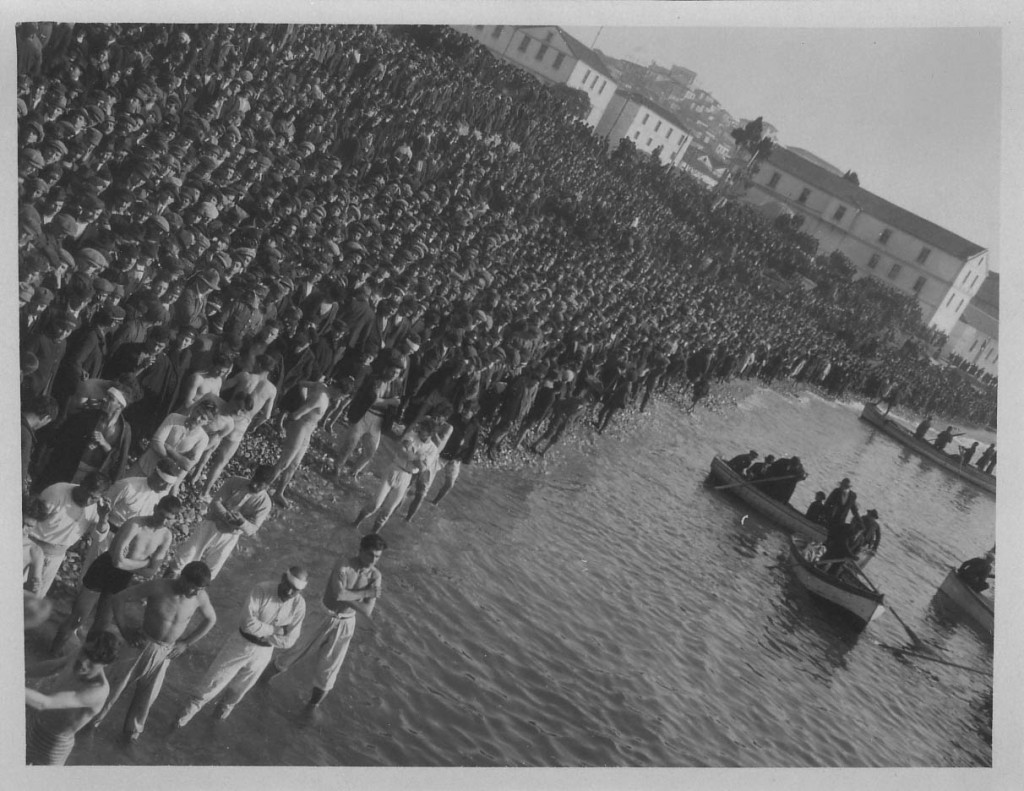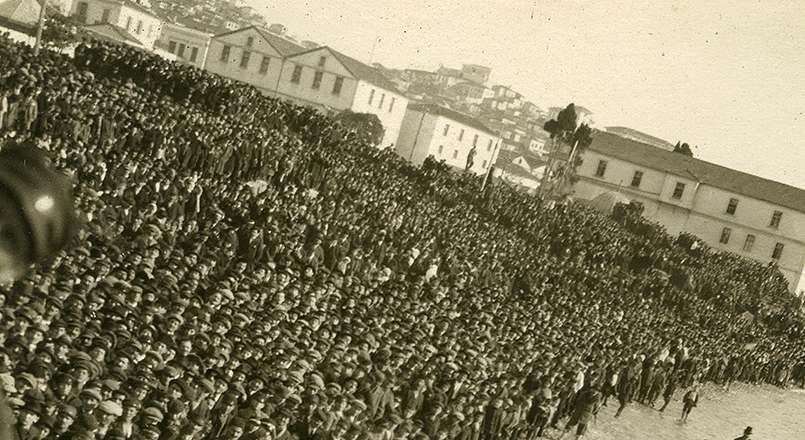Museum Detectives
How do we unravel the mysteries that we find in our archives? NERHS Director/Curator gives a crash course in museum detective work (Part 1).

It's a Mystery
Deep in the Near East Foundation archival collection, there is a large binder marked “Album #5 – Miscellaneous.” The book’s plastic sleeves contain an amazing assortment of images. Bright-eyed girls in orphanage dresses cluster around a woman in a small courtyard. A smiling girl helps a toddler to stand. Serious young men pose on a large staircase. Refugees tend to their horses in a sprawling camp.
Some of the photographs are readily identifiable based on landmarks. One glimpse of the distinctive church spire peeking over the heads of a group of orphans, and we know that we are at Kazachi Post orphanage in Alexandropol. The graceful arches and sparkling fountains of Nellie Miller Mann’s beloved Birds’ Nest orphanage at Sidon are readily recognizable. The regal columns of the Zappeion Orphanage, a repurposed Greek exhibition hall, certainly stand out in a crowd.
But most of the photos are not so readily identifiable. Dozens of fascinating photographs with no identifying information — each one a small mystery.
On a recent visit to the archives, I was captivated by three photographs of the same scene. Hundreds — probably thousands — of people stood at the edge of a body of water, facing a few small boats. Were the people refugees? Relief workers? Soldiers? A combination of the three? And where was the picture taken? It might be a coastal city on the shores of the Black Sea. It might be a large lake, like Van or Urumia. It could even be a Greek island. Who was the photographer? I couldn’t wait to learn more.

A mystery photo from the Near East Foundation archives.

Start With Simple Questions
We have no place name, no date range, and no idea who took the picture. Where do we begin? Let’s start with a few questions about the image directly above this paragraph. It is clearly a photograph of the same event, but with a few small differences. In the first image, a face peers at us from the top left corner of the frame. He wears a hat with an insignia. The second photograph shows a bit more of the surrounding area.
What Do I See? If this sounds basic, it’s because it is. I start with this question every single time I’m faced with a mystery image. I try to be as descriptive as possible — even if it’s just in my head!
Right now, we’re looking at a black and white photograph of a crowd of people standing next to a body of water. The crowd appears to be all men. Most of them are well-dressed in black coats and hats. Some have white bands wrapped around their heads. The men closest to the camera are in varying states of undress; they wear undershirts and shorts or what looks like long underwear. Some of the men are wading into the water. A few are hugging themselves as if to keep warm. The men’s clothing and posture suggests a chilly day. By looking at scans in a photo editing program, I can pull up some more details. The images at left and below have been cropped and brightened, and I’ve applied a sharpening filter.

A closeup of one of our mystery photos, with a touch of editing for contrast and clarity
How Do I Feel Looking At This? There’s nothing wrong with mentally putting yourself in the place of a photograph’s subject. It’s okay to be a little emotional as you do this kind of exploration. Your feelings about the image might change as you learn more. At first glance, this photo makes me feel a little anxious. Maybe that is just because I don’t like crowds very much, but I’m also a bit put off by the fact that the men do not look very happy. I’m very curious at to why there are no women or girls. I feel concerned about the men in the water — they must be so cold if everyone else is wearing hats and coats. Are they trying to escape from something? Am I looking at a desperate situation?
Okay, so I’ve looked at what I see and how I feel about it. Where do I go from here? Stay tuned!
Signing off for now,
Molly Sullivan
Museum Detective
(and NERHS Director/Curator)
What’s next for our Museum Detective? Check back soon for Part 2 of this story!
